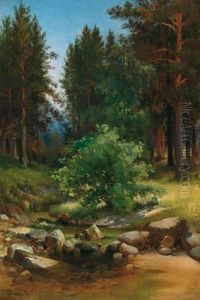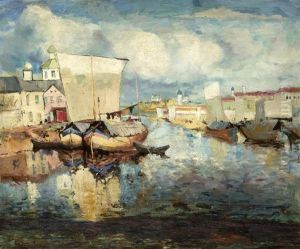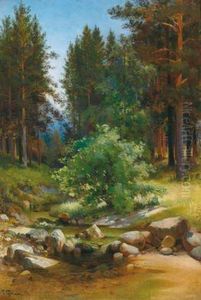Grigoriy Ivanovid Gurkin Paintings
Grigoriy Ivanovich Gurkin stands as a pivotal figure in Russian art history, particularly known for his profound influence on Siberian art. Born on January 20, 1870, in the Altai region of the Russian Empire, Gurkin's early life was deeply entwined with the landscapes and indigenous cultures of Siberia, themes that would profoundly shape his artistic oeuvre. Although he was primarily self-taught, Gurkin's natural talent and dedication to his craft led him to become one of the most celebrated artists of his time in Siberia, and indeed, in Russia.
Gurkin's work is distinguished by its vibrant portrayal of the Siberian landscape and its indigenous peoples. His paintings are characterized by their vivid color palette and dynamic composition, capturing the rugged beauty of the Altai mountains and the rich cultural heritage of its inhabitants. Gurkin was not just an artist but also an avid ethnographer; his artworks serve as valuable historical documents that offer insights into the life and traditions of Siberian ethnic groups at the turn of the 20th century.
Throughout his career, Gurkin faced numerous challenges, including periods of political turbulence and personal hardship. Despite these obstacles, he remained committed to his artistic vision, contributing significantly to the cultural life of Siberia. He was a key figure in the establishment of art schools and museums in the region, fostering a vibrant artistic community that would endure long after his death.
Grigoriy Ivanovich Gurkin died on July 6, 1937, leaving behind a legacy that has continued to inspire generations of artists. His works are preserved in museums across Russia, serving as a testament to his enduring impact on the art and culture of Siberia. Gurkin's life and art remain a subject of admiration and study, reflecting the power of artistic expression to capture the essence of a place and its people.


